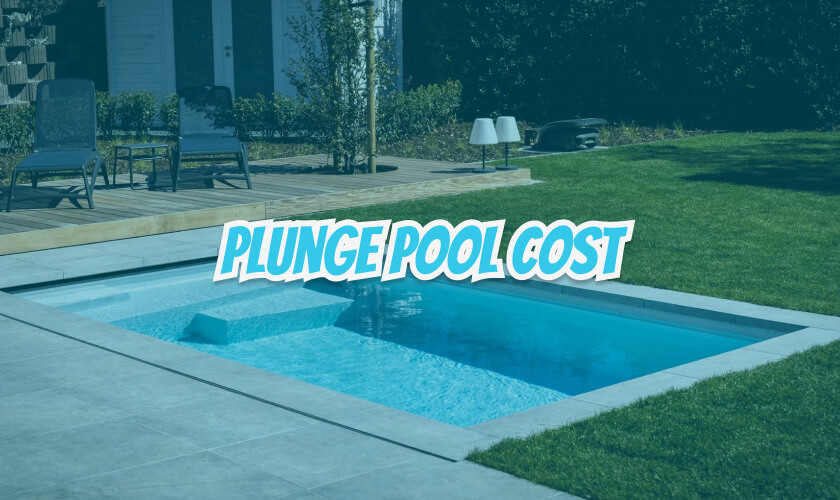Are you thinking about adding a plunge pool to your backyard? Plunge pools have become increasingly popular in recent years, providing a refreshing and compact option for cooling off during hot summer days. But before you dive in, it’s important to consider the cost involved in installing a plunge pool.
The cost of a plunge pool can vary depending on several factors, such as the size, material, and additional features you choose. On average, you can expect to pay anywhere from $10,000 to $30,000 for a basic plunge pool. If you opt for a larger size or incorporate custom designs, the cost can increase significantly. It’s also worth noting that installation costs, such as excavation and landscaping, should be factored into your budget.
By understanding the potential costs associated with a plunge pool, you can make an informed decision and ensure that it aligns with your budget and preferences. So, let’s take a closer look at the factors that can impact the cost of a plunge pool and explore some tips to help you save money along the way.
Factors Affecting Plunge Pool Cost
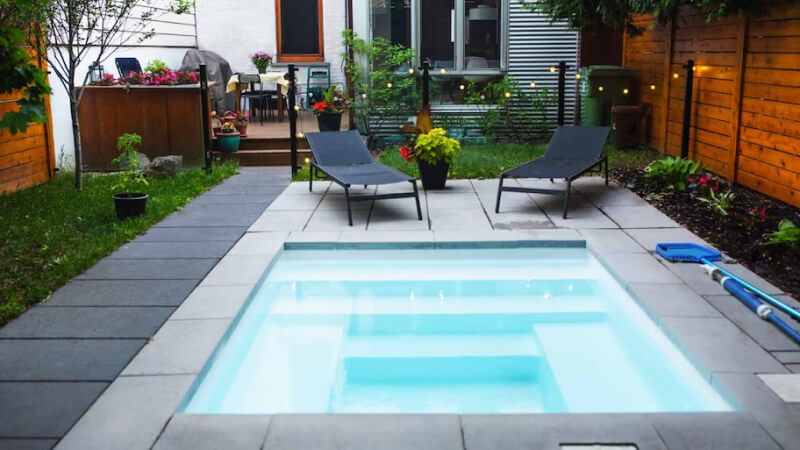
When it comes to installing a plunge pool, the cost can vary depending on several factors. Here are some key factors that can affect the overall cost of your plunge pool:
Size
The size of the plunge pool is one of the primary factors that impact the cost. Naturally, larger pools require more materials, labor, and excavation, which can drive up the price. On the other hand, smaller plunge pools tend to be more affordable.
Materials
The choice of materials used for constructing the plunge pool can significantly affect the cost. Different materials, such as concrete, fiberglass, and vinyl, come with varying price tags. While concrete is considered the most durable option, it is also typically the most expensive.
Customization
If you have specific design requirements or want to add extra features to your plunge pool, such as waterfalls, lighting, or a spa area, it can increase the cost. Customizations add complexity to the construction process and require additional materials and labor.
Site Preparation
The condition of the ground where the plunge pool will be installed can impact the cost. If the site requires extensive excavation, leveling, or additional reinforcement, it can add to the overall expenses.
Location
The location of your property can also play a role in the cost. Factors such as accessibility, local regulations, and permits may impact the overall expenses. Additionally, transportation costs for materials and labor can vary depending on the distance to your location.
Labor Costs
Labor costs can vary depending on the region and the complexity of the project. Hiring experienced professionals may come at a higher price, but it can ensure a well-built and long-lasting plunge pool.
Read Also: Cost to Resurface Pool: What You Need to Know
Additional Features
If you plan to include additional features like heating systems, pool covers, or automation systems, they will add to the overall cost of your plunge pool.
It’s important to remember that the cost of a plunge pool can vary significantly based on these factors. It’s advisable to consult with pool builders or contractors to get accurate estimates based on your specific requirements and location.
| Factors Affecting Plunge Pool Cost |
|---|
| – Size |
| – Materials |
| – Customization |
| – Site Preparation |
| – Location |
| – Labor Costs |
| – Additional Features |
Choosing the Right Size and Design Your Plunge Pool Cost
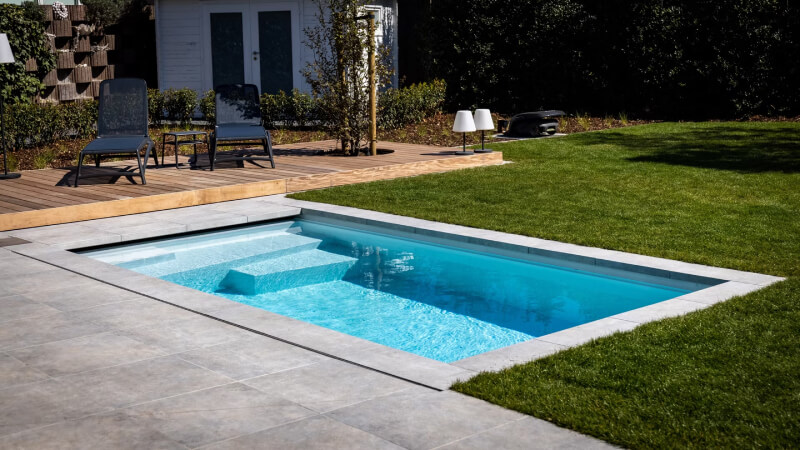
When it comes to planning your plunge pool, choosing the right size and design is crucial. Here are some important factors to consider:
Size Matters
Determining the size of your plunge pool will depend on the available space in your backyard and how you intend to use it. Here are a few things to keep in mind:
- Measure the area: Take accurate measurements of the space where you plan to install the plunge pool. This will help you determine the maximum dimensions you can work with.
- Consider usage: Think about how many people will typically use the plunge pool at once. If you’re planning to host pool parties or have a large family, you may want to opt for a bigger size.
- Personal preference: Ultimately, the size of your plunge pool should align with your personal needs and preferences. Whether you envision a cozy solo retreat or a place for social gatherings, choose a size that suits your lifestyle.
Design Diversity
Plunge pools come in a variety of designs, ranging from sleek and modern to natural and rustic. Here are some popular options to consider:
- Contemporary designs: These pools often feature clean lines, geometric shapes, and minimalist aesthetics. They can seamlessly integrate into modern outdoor spaces.
- Naturalistic designs: If you prefer a more organic look, consider a plunge pool with natural stone finishes, cascading waterfalls, or lush landscaping around the edges.
- Customization options: Many plunge pool manufacturers offer customization options, allowing you to choose unique features like built-in seating, swim jets for exercise, or even an integrated spa section.
Remember, the design of your plunge pool should complement your overall backyard aesthetic and blend well with the surrounding environment.
Cost Considerations
While the cost of a plunge pool can vary depending on size, design, and additional features, here’s a general idea of what you can expect:
| Size of Plunge Pool | Average Cost Range |
|---|---|
| Small (6-8 feet) | $10,000 – $20,000 |
| Medium (8-12 feet) | $20,000 – $30,000 |
| Large (12+ feet) | $30,000 – $50,000 |
Keep in mind that these figures are estimates and can vary based on factors such as materials used, location, and any additional customization.
By carefully considering the size, design, and cost of your plunge pool, you’ll be well on your way to creating your perfect backyard oasis. So let’s dive in and start planning!
Read Also: Pool Heater Cost: What You Need to Know Before Investing
Materials and Construction Methods Plunge Pool Cost
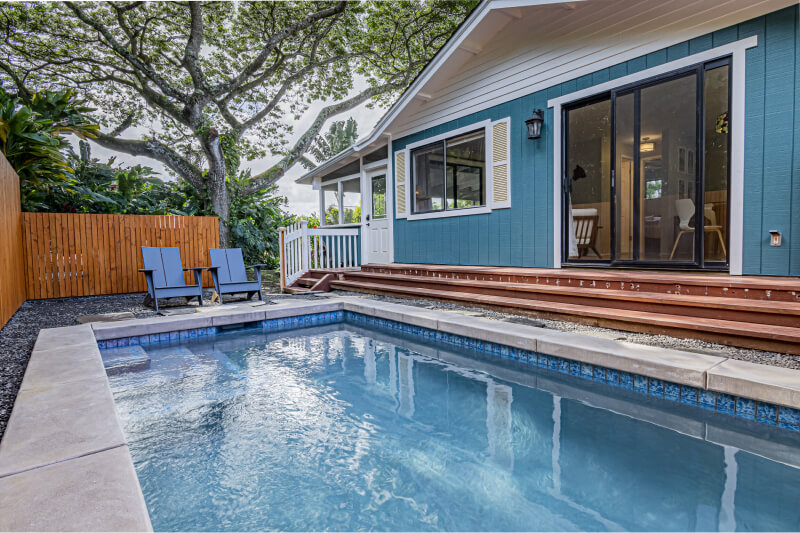
When it comes to building a plunge pool, the choice of materials and construction methods can greatly affect the overall cost and durability of the pool. Here are some key aspects to consider:
1. Pool Shell Material
- Concrete: Concrete is a popular choice for plunge pool construction due to its strength and versatility. It can be molded into various shapes and sizes, allowing for customization. However, it can be more expensive than other options.
- Fiberglass: Fiberglass pools offer a smooth and low-maintenance finish. They are pre-manufactured and easy to install, which can save on construction time and costs. However, customization options may be limited.
- Vinyl: Vinyl liners are another cost-effective option. They are flexible, come in various patterns, and can be easily replaced if damaged. However, they may require more maintenance and have a shorter lifespan compared to concrete or fiberglass.
2. Pool Filtration System
- Sand Filter: Sand filters are commonly used in plunge pools as they are affordable and effective at removing debris and contaminants from the water. They require regular backwashing to maintain optimum performance.
- Cartridge Filter: Cartridge filters offer better filtration and require less maintenance compared to sand filters. They have replaceable cartridges that can last for several seasons.
- Diatomaceous Earth (DE) Filter: DE filters provide the highest level of filtration but require regular maintenance. They use a fine powder made of fossilized diatoms to filter out even the smallest particles.
3. Pool Heating
- Electric Heat Pump: Electric heat pumps are energy-efficient and popular for heating plunge pools. They work by extracting heat from the air and transferring it to the pool water. While the initial cost may be higher, they can save money in the long run.
- Gas Heater: Gas heaters offer quick heating and are suitable for colder climates. However, they can be more expensive to operate due to the cost of gas.
- Solar Heater: Solar heaters utilize the sun’s energy to warm the pool water, making them environmentally friendly and cost-effective in sunny regions. However, their effectiveness may be limited in colder or overcast areas.
Remember, the cost of materials and construction methods will vary depending on factors such as pool size, location, and additional features. It’s advisable to consult with pool builders or contractors to get accurate cost estimates and ensure that your plunge pool is built to your specific requirements.
Read Also: Best Pool Pump Timer to Buy – Save Your Electricity Bill!
Additional Features and Accessories Plunge Pool Cost
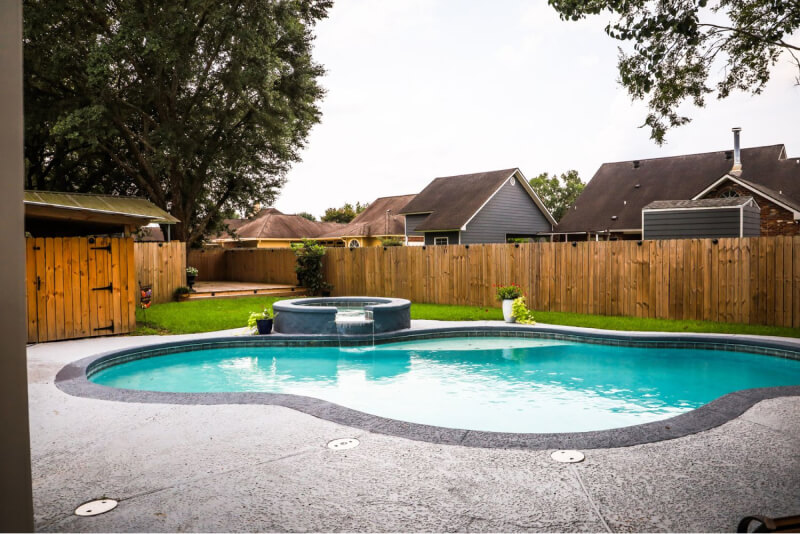
When it comes to plunge pools, there are various additional features and accessories that can enhance your experience and create a more enjoyable space. Here are some options to consider:
1. Heating Systems
- Installing a heating system allows you to enjoy your plunge pool all year round, even during colder months.
- Choose from gas, electric, or solar heating options based on your preferences and budget.
- A heated plunge pool can provide therapeutic benefits and increase the overall comfort of your swimming experience.
2. Lighting Effects
- Incorporating lighting features can transform your plunge pool into a mesmerizing oasis.
- LED lights, available in a wide range of colors, can create a soothing ambiance or a vibrant atmosphere depending on your mood.
- Underwater lighting is particularly popular and adds a touch of elegance to your pool.
3. Waterfalls and Fountains
- Adding a waterfall or fountain feature can elevate the aesthetics of your plunge pool.
- The sound of cascading water creates a relaxing and tranquil environment.
- Explore different designs and options to find the perfect waterfall or fountain that complements your backyard space.
4. Jets and Massage Features
- To enhance the therapeutic benefits of your plunge pool, consider installing jets or massage features.
- These can provide targeted hydrotherapy, helping to relieve muscle tension and promote relaxation.
- Jets can be strategically placed to provide a soothing massage experience.
5. Pool Covers and Safety Measures
- Investing in a high-quality pool cover is essential for maintaining cleanliness and preventing debris from entering your plunge pool.
- Additionally, pool covers help to retain heat and reduce evaporation, saving energy and keeping operational costs down.
- It’s also important to consider safety measures such as pool fences or alarms to ensure the well-being of children and pets.
Remember, the cost of these additional features and accessories will vary depending on factors such as the size of your plunge pool, the complexity of installation, and the specific products chosen. It’s always a good idea to consult with professionals and get accurate quotes to make informed decisions about which features to include in your plunge pool project.
Read Also: Above Ground Pool with Decking Cost: The Ultimate Guide
Installation and Maintenance

Installing a plunge pool requires careful planning and professional assistance to ensure a smooth and successful process. Here are some key factors to consider:
Choosing the Right Location
Before installing a plunge pool, it’s essential to select the perfect spot in your backyard. Factors such as sunlight exposure, privacy, and accessibility should be taken into account. Consulting with a professional installer can help you determine the most suitable location.
Preparation and Excavation
Once the location is finalized, the next step is to prepare the site for excavation. This involves clearing the area, assessing any potential obstacles or underground utilities, and obtaining the necessary permits. Professional excavators will dig the hole according to the pool’s specifications.
Structural Support
Plunge pools require a solid and level foundation to maintain their integrity. This may involve constructing a reinforced concrete slab or using specialized support structures. The exact method will depend on the pool’s size and design, as well as the specific site conditions.
Pool Installation
Once the foundation is ready, the plunge pool can be installed. This typically involves placing the pre-constructed pool structure into the excavated hole. The pool is then connected to the necessary plumbing and electrical systems. A team of experienced installers ensures that everything is properly aligned and securely in place.
Landscaping and Finishing
After the plunge pool is installed, attention can be turned to landscaping the surrounding area. This includes adding decking, paving, or other desired features to enhance the pool’s aesthetic appeal and functionality. Landscaping can also help with drainage and ensure the area is safe and accessible.
To keep your plunge pool in excellent condition, regular maintenance is crucial. Here are some maintenance tips:
- Cleaning: Regularly clean the pool using a skimmer net or pool vacuum to remove debris and leaves. This helps prevent clogging and ensures proper filtration.
- Water Balance: Maintain the correct water chemistry by regularly testing and adjusting the pool’s pH, alkalinity, and sanitizer levels. This promotes healthy water conditions and prevents the growth of algae and bacteria.
- Filtration and Circulation: Ensure that the pool’s filtration system is functioning optimally. Clean or replace filters as needed and run the pump for an appropriate duration each day to keep the water circulating effectively.
- Covering when not in use: Utilize a pool cover when the plunge pool is not in use to prevent leaves, dirt, and other debris from entering the water. This reduces the need for frequent cleaning and helps maintain water quality.
Remember, proper installation and regular maintenance are key to enjoying your plunge pool for years to come.
Conclusion
In conclusion, considering the cost of a plunge pool is an important aspect when planning to install one in your backyard. While the exact cost can vary depending on various factors, such as size, materials, location, and additional features, it is essential to budget accordingly.
Remember, the cost of a plunge pool is not solely determined by the installation expenses but also the long-term maintenance and operational costs. It is crucial to factor in ongoing expenses, such as water treatment, electricity, and regular maintenance, when evaluating the overall cost.
Ultimately, the cost of a plunge pool can be a worthwhile investment in creating a relaxing and enjoyable outdoor space. By carefully considering your budget, needs, and desired features, you can make an informed decision that brings you years of enjoyment.
